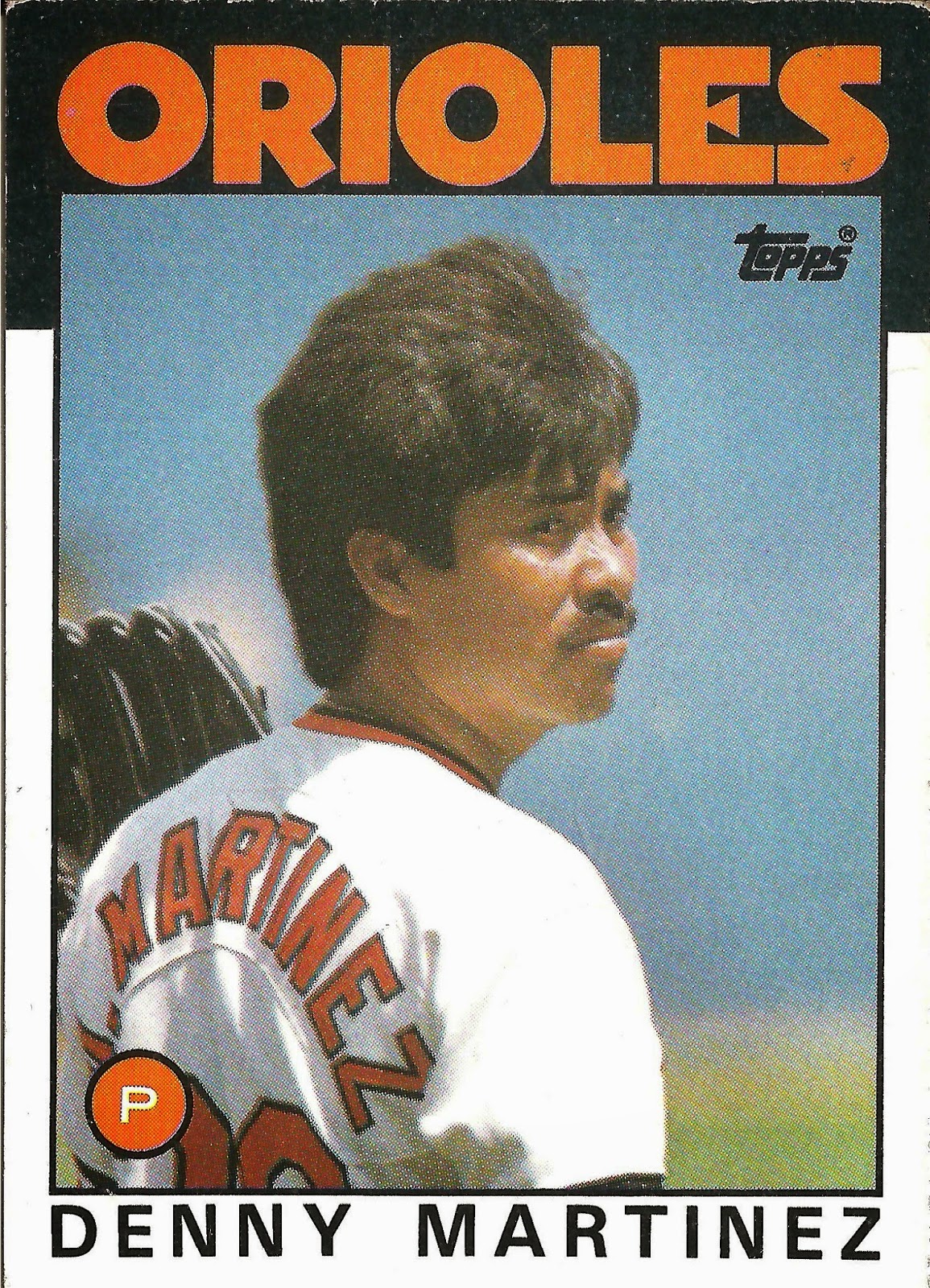Card thoughts: Greg Booker looks really young in this picture, but on his earlier
cards, he looks really old. Probably because he aced the mustache.
The player:
Greg Booker was a man with a dynamite arm, but man did he have control issues. In
1982, while pitching at Class-A Reno, the guy walked an incredible 157 batters
in 161 or so innings (against 87 strikeouts). That season would be Booker’s
last full time as a starter, as he moved up the ladder steadily, despite ERAs
that never went below 5, and walks galore. Somehow making the majors at age 23
(11 2/3 innings pitched, 9 walks), he was a stellar contributor to the Padres
pennant run in 1984, keeping his ERA below 3 throughout July and August.
It was good enough for a roster
spot in the postseason, where pitched fine against the Cubs, but then lost his
control in Game 3 of the World Series, walking 4 in one inning.
Booker got a card in this set,
perhaps because he pitched in the World Series, because he barely pitched at all
in ’85 (22 1/3 innings pitched, and ugly 6.85 ERA). He finally righted the ship
in 1987 (after an ’86 season mostly in the minors), and had a decent year as a middle
reliever (while marrying his future boss’s daughter—Kristi McKeon).
But ironically, once his
father-in-law, Jack McKeon, took over as manager (in addition to his GM duties)
in 1988, he barely pitched. Booker was booed mercilessly, while he often went
two weeks between relief appearances. While his ERA doesn’t seem all that bad (3.39),
he had become the team goat. By the middle of the 1989 season, Booker was gone,
traded to the Twins for Terrible Freddie Toliver. Invited to spring training by
the Cubs in 1990, he was cut before the season began, and ended up pitching his
last 2 games with the Giants that season.
Booker still works in baseball
(as a scouts), after previously working for a long time as a pitching coach
(including from 1997-2003 for the Padres). He has no hard feelings for his father-in-law:
He lived next door to him for several years.
Rear guard: Back before pitching prospects were protected like rare jewels, it was common to see a 19-year phenom appear in the majors. Expansion teams especially had the propensity to rush first round draft picks to the majors in order to create some buzz. Little did Franklin know that he would never pitch again the majors after 1971. The poor guy couldn't buy a ticket out of Alexandria (Texas League) for three years, and he missed the entire 1972 season after injuring his elbow. Even sadder, after never making it back to the pros, Franklin's wife left him, his father committed suicide, and he suffered from paranoid schizophrenia. His mental illness caused him to overeat and chain smoke. He blames baseball for his problems. Franklin currently resides in a group home.



























